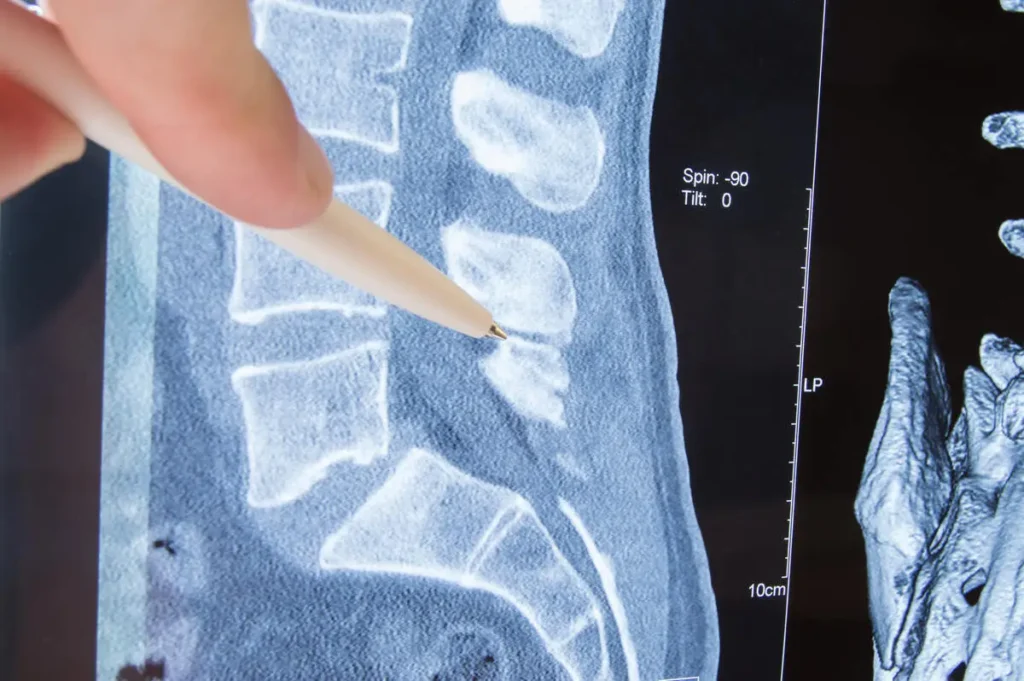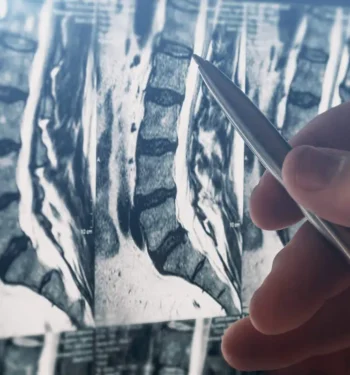
Spinal stenosis, often caused by age-related changes in the spine, can lead to persistent pain, weakness, or numbness due to nerve root compression. A common surgical procedure is a solution for foraminotomy for spinal stenosis, which widens the openings where spinal nerves pass to relieve pressure. Foraminal stenosis surgery can offer additional relief and improve overall spinal function, while also helping prevent future nerve damage and reduce the likelihood of recurring symptoms.
If you’re considering spinal stenosis treatment in Indiana, Goodman Campbell’s experienced and subspecialized team provides comprehensive care tailored to your needs. Their advanced techniques are designed to restore mobility and enhance your quality of life.
What Is the New Surgery for Foraminal Stenosis?
As mentioned, foraminotomy is a surgical procedure performed to expand the intervertebral foramen, the spaces through which spinal nerve roots exit. Over time, these spaces can narrow due to aging or a condition such as degenerative arthritis, which can cause compressed nerves.
Traditionally, foraminotomy was performed as open surgery, requiring larger incisions and longer recovery. However, minimally invasive techniques have revolutionized foraminal stenosis surgery. Using smaller incisions and advanced tools, surgeons can now achieve the same results with less recovery time and tissue damage.
Goodman Campbell specializes in foraminotomy procedures across various spinal levels, including the frequently affected vertebra at the L5-S1 region. Advanced surgical solutions, tailored to each patient, help ensure optimal outcomes. If you’re suffering from foraminal stenosis, talk to your doctor about how Goodman Campbell delivers innovative care.
Foraminotomy vs. Laminectomy: What Is the Difference?
When it comes to relieving nerve pressure in the spine, patients often ask: What is the difference between foraminotomy vs. laminectomy? While both are forms of spinal decompression surgery, the procedures target different areas of the spine.
- Foraminotomy focuses on enlarging the foramina to reduce nerve compression. It is best for cases where the nerve root is pinched in the foraminal space.
- Laminectomy, on the other hand, involves removing part of the vertebra, known as the lamina, to relieve spinal cord pressure.
When comparing foraminotomy vs. laminectomy, it’s important to consider where the compression is occurring and what symptoms are present. While both surgical options are effective, the right choice depends on your specific condition. A specialist at Goodman Campbell can guide you in choosing the best approach so you can achieve lasting relief and restored mobility.
Who Is a Candidate for a Foraminotomy?
If you experience symptoms like chronic back pain, numbness, tingling, neck pain, or limb weakness, you may have foraminal stenosis. When conservative treatments such as physical therapy or medication fail, surgery such as foraminotomy could be the best solution.
Foraminotomy candidates typically have:
- Persistent foraminal stenosis symptoms
- Exhausted nonsurgical options
- No contraindicating health conditions
Determining spine surgery eligibility requires a thorough evaluation. Consult Goodman Campbell to see if foraminotomy fits your health needs and goals.
Does Foraminotomy Weaken the Spine?
A well-performed foraminotomy aims to relieve nerve pressure while preserving spinal stability. By targeting specific areas that are causing discomfort and avoiding unnecessary bone or tissue removal, surgeons can keep the spine column strong.
Foraminotomy risks are generally minimal, especially when performed by experienced specialists using advanced techniques. Compared to other decompressive surgeries, foraminotomy is known for its balance of safety and effectiveness. With patient outcomes data to back it up, you can rest assured that Goodman Campbell prioritizes spine surgery safety to deliver the best possible care.
How Painful Is a Foraminotomy and What Is Recovery Like?
How painful is a foraminotomy? Postsurgery discomfort varies, but most patients report that pain is manageable and short-lived compared to presurgery symptoms. Localized soreness at the incision site is normal and typically subsides within weeks.
Many patients ask, “How long is recovery from foraminotomy?” While recovery times can vary, foraminotomy is generally less invasive than a laminectomy and allows a quicker return to normal activities. Lumbar foraminotomy recovery time can range 4–6 weeks, depending on the patient and procedure complexity. Specific cases like L5-S1 foraminotomy recovery may require additional precautions, like avoiding high-impact activities.
Goodman Campbell provides detailed recovery guidance to help you heal safely and efficiently. Discuss your expectations with their team for a smooth post-op experience.
What Is the Success Rate of Foraminal Stenosis Surgery?
The foraminotomy success rate is impressive, with most patients reporting significant improvement in symptoms and quality of life. Goodman Campbell’s patient outcomes data and lumbar foraminotomy success rates demonstrate high levels of success. This strong track record contributes to a positive foraminal stenosis prognosis, especially when addressed early and treated appropriately.
Factors influencing outcomes include the patient’s health, severity of stenosis, and surgical team expertise. Lumbar success rates tend to be higher than cervical or thoracic levels due to lumbar spine accessibility and common nerve compression there.
Recent neurosurgical residents performed 260% more spine surgery procedures than orthopedic surgery residents.* Choosing a trusted care center like Goodman Campbell can increase the likelihood of excellent results.
Ask Your Doctor About Goodman Campbell
Foraminotomy for spinal stenosis offers a highly effective solution for those seeking relief from nerve root compression and its debilitating symptoms. By restoring space in the spinal canal, foraminotomy can relieve pain, increase mobility, and help patients return to the lifestyles they love.
Goodman Campbell stands out as a trusted provider of spine stenosis care, offering innovative surgical solutions and a personalized approach to recovery. Ask your doctor about Goodman Campbell and take the next steps toward a pain-free, active lifestyle today.
*Pham MH, Jakoi AM, Wali AR, Lenke LG. Trends in Spine Surgery Training During Neurological and Orthopaedic Surgery Residency: A 10-Year Analysis of ACGME Case Log Data.



